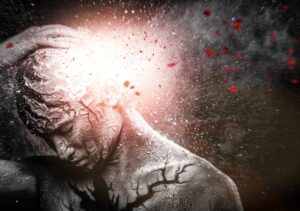Have you ever wished you could remember your dreams more vividly? Or have you ever wanted to record your dreams and watch them later like a TV program or a great movie?
I don’t know about you, but this is always something I have wanted to do! And now researchers have found a way to translate our every thought and dream into a video that can be watched later.
 This innovative device utilizes existing technologies like Magnetic Resonance Imaging (MRI) and supercomputers to make a video of what a person is thinking about through computational models.
This innovative device utilizes existing technologies like Magnetic Resonance Imaging (MRI) and supercomputers to make a video of what a person is thinking about through computational models.
The first ever study in the United States was conducted at Brown University in 2011 and in it, three people were asked to wear an EEG device while they slept. They were then woken up in the height of dream activity and asked what they were dreaming about. The device cataloged all of the brain images and stored them.
The scientists repeated this process 200 hundred times for each person and made a database of all of the images. Once they were awake, the scientists showed them the images and scanned their brains again based on their responses.
The people in the study were then asked to sleep again, and the brain scanners went to work. What happened next was revolutionary, the device was able to predict what the person was dreaming about!
While this was exciting, at this point the scientists reached only broad object recognition, and it wasn’t until researchers at the University of Berkley, took it one step further and were able to get video clips from dreams.
In their study, subjects once again were hooked up to fMRI devices, yet, this time they were shown movie trailers. The computer hooked up to the fMRI scanned the subjects brain images and then looked over 18 million seconds you tube clips and tried to recreate what the person was seeing.
While some images from the brain scanner turned out pretty fuzzy (alike to a dream you are trying to remember when you wake up) some images were captured in complete clarity!
This technology may take some innovation, but this revolutionary science will reach dream recording in full spectrum.
Applications for this tech also include, the ability to see what is going on in the minds of people who can’t communicate (like coma patients and stroke victims), as well as opening up avenues for the formation of a brain-machine interface, that can send and receive messages via internet from people across the globe.
by LJ Vanier
Sources:
http://news.berkeley.edu/2011/09/22/brain-movies/
http://www.browndailyherald.com/2013/04/10/researchers-map-brain-activity-to-read-dreams/


Yesterday, for the third time, during early morning, I was able to invoke REM dream sleep while fully awake, with the eyes closed. The ability to remain conscious, even during sleep (not lucid dream, but actually being awake) is innate, but is progressing at an accelerating pace, especially lately. There was no sleep paralysis (I am able to break sleep paralysis during sleep) and it would have been possible to type (I can type with the eyes closed) and do other kinds of live messaging, as well as drawing, while the dream was happening, or to speak.
I don’t need the new technology, it’s already coming innately.
From prior experience, I can make the following observations. First, the floaters and the individual retinal units remain intact during a dream. (I can see all the way down to the individual nerve fibers, or about 1/4 arc-minute angular resolution.) Second, if the eyes are open, the actually image *will* be seen, but will be heavily re-interpreted and woven into the dream; e.g. the letters on a white page in a book may look like the dark windows of a white riverside condo in Venice.
Third, when the dream starts, the darkness of the inner eyelids becomes like a 3D projection screen – effectively becoming a translucent window looking out onto another world. This is when the eye jittering associated with looking out into real scenery starts and it is what the rapid eye movement of REM sleep actually is. The impulse for the image generation appears to come from the back of the head, not the eyes; and when the image starts to generate, it’s like a flash being triggered, as if the image-light suddenly switched on. It can flicker on for a fraction of a second, then go away, then return again for a longer stay.
Finally, when the dream is in full swing, there is a strong tendency for the “self” to become dormant, even if only for the brief moment that the sleep or dream images arrive, and there is no decision-making capability. Whatever intentional actions happen, at this point, have to be something pre-planned and pre-programmed; there is no ability to make the decision, in real-time, to do it. What happened yesterday was one of the few times where the “self” remained fully intact, along with all capacity for decision-making and control of the body and its motions.
I really can’t wait till I can review my dreams! This sounds so cool and I need to do it when the tech gets more advanced!
This machine have recorded data, but this data is taken from people and now my question is that is data is update every time ( daily) ??
i WANTED TO KNOW IF A PERSON IS ABLE TO BUY THE MACHINE FOR THERE OWN USE?
Are the dream machine available to buy them?
Wow am wordless.this is amazing. Can wait to see my own dreams